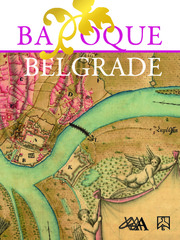Приказ основних података о документу
New Goods for a New Society – Belgrade and Habsburg Central Europe
| dc.creator | Bikić, Vesna | |
| dc.date.accessioned | 2024-01-02T15:17:42Z | |
| dc.date.available | 2024-01-02T15:17:42Z | |
| dc.date.issued | 2019 | |
| dc.identifier.isbn | 978-86-6439-044-6 | |
| dc.identifier.isbn | 978-86-6433-020-6 | |
| dc.identifier.uri | http://rai.ai.ac.rs/handle/123456789/1223 | |
| dc.description.abstract | The Austrian occupation of Belgrade in 1717 brought to the city a new cycle of transformations. As so many times before, the new war conditions at this important geostrategic location required a series of interventions aimed at improving the defensive capabilities of its fortifications, whereas the presence of new military troops and an army of various craftsmen and merchants in it affected the everyday life of its citizens in many ways. From the time of the transformation of Belgrade into the fortified capital of Despot Stefan Lazarević (r. 1404–1427), the city underwent and adopted major cultural changes. Its short-lived sojourn within the borders of the Serbian state was succeeded by Hungarian rule for the best part of a century, only to be followed by nearly two hundred years under the Ottomans. Every change of ruler was accompanied by an almost total disruption of the continuity of material culture, that is, by an inevitable adoption of different cultural patterns. This new change in the early eighteenth century, the latest in the series, once again connected Belgrade with Central European artisanal and artistic circles. Unlike the previous time, that is, the period of Hungarian rule and Gothic artisanal and artistic trends during the Middle Ages, the cultural milieu at the beginning of the Modern Age was shaped in accordance with the tenets of monumental Baroque and in the conditions of a new economic policy – Mercantilism. The key role in the concept of the new Baroque-style city was played by the standing army, whose task, in addition to making conquests, was to maintain order. Prince Eugene of Savoy’s reorganisation of armed forces relied on commandeering, that is, forced recruitment of regiments for service in certain regions, predominantly in the crown lands, such as Austria, Bavaria, Bohemia and Hungary, but also in other regions, so that there were soldiers who spoke French, Flemish, Italian, Serbian and Croatian. Besides its diversified ethnic composition, the Austrian army was also full of soldiers of various occupations, mostly because of the recruitment of craftsmen, who greatly assisted in the performance of repairs and the production of necessary items. | sr |
| dc.language.iso | en | sr |
| dc.publisher | Belgrade : Institute of Archaeology | sr |
| dc.publisher | Belgrade : Belgrade City Museum | sr |
| dc.relation | info:eu-repo/grantAgreement/MESTD/Basic Research (BR or ON)/177021/RS// | sr |
| dc.rights | openAccess | sr |
| dc.source | Baroque Belgrade – Transformation (1717–1739) | sr |
| dc.subject | Belgrade | sr |
| dc.subject | Early modern period | sr |
| dc.subject | buttons | sr |
| dc.subject | buckles | sr |
| dc.subject | shoe parts | sr |
| dc.subject | weapon finds | sr |
| dc.subject | finger rings | sr |
| dc.subject | Personal hygiene tools | sr |
| dc.subject | apothecary vessels | sr |
| dc.subject | glass vessels | sr |
| dc.subject | cooking pots | sr |
| dc.subject | table vessels | sr |
| dc.subject | eating utensils | sr |
| dc.subject | clay pipes | sr |
| dc.subject | devotional articles | sr |
| dc.title | New Goods for a New Society – Belgrade and Habsburg Central Europe | sr |
| dc.type | bookPart | sr |
| dc.rights.license | ARR | sr |
| dc.citation.epage | 195 | |
| dc.citation.spage | 162 | |
| dc.identifier.fulltext | http://rai.ai.ac.rs/bitstream/id/2562/bitstream_2562.pdf | |
| dc.identifier.rcub | https://hdl.handle.net/21.15107/rcub_rai_1223 | |
| dc.type.version | publishedVersion | sr |


